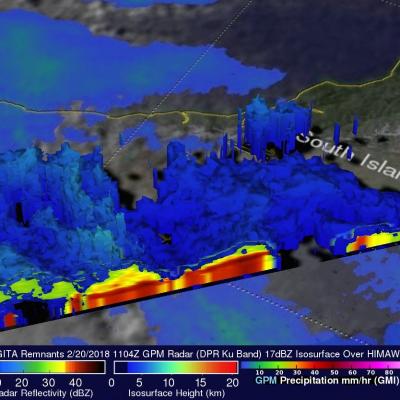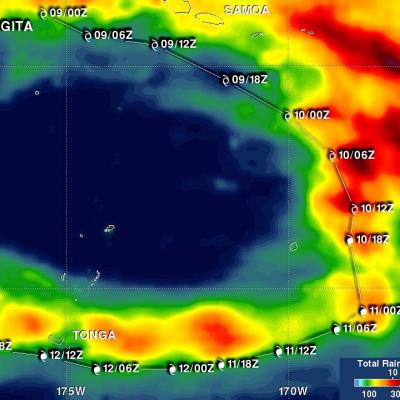GPM Examines Tropical Cyclone Gita Remnants Over New Zealand
As predicted, the remnants of tropical cyclone GITA hit New Zealand on Tuesday (local time). GITA had transitioned to an extra-tropical low and was much weaker than when it hit Tonga last week. It still contained strong tropical strong force winds with occasionally heavy rainfall. New Zealand's South Island was the hardest hit. The northern end of of the South Island was in the right front quadrant of the tropical cyclone where the wind speeds around the center of circulation were increased by the low's speed of movement. Torrential rainfall led to flooding and landslides on the South Island





